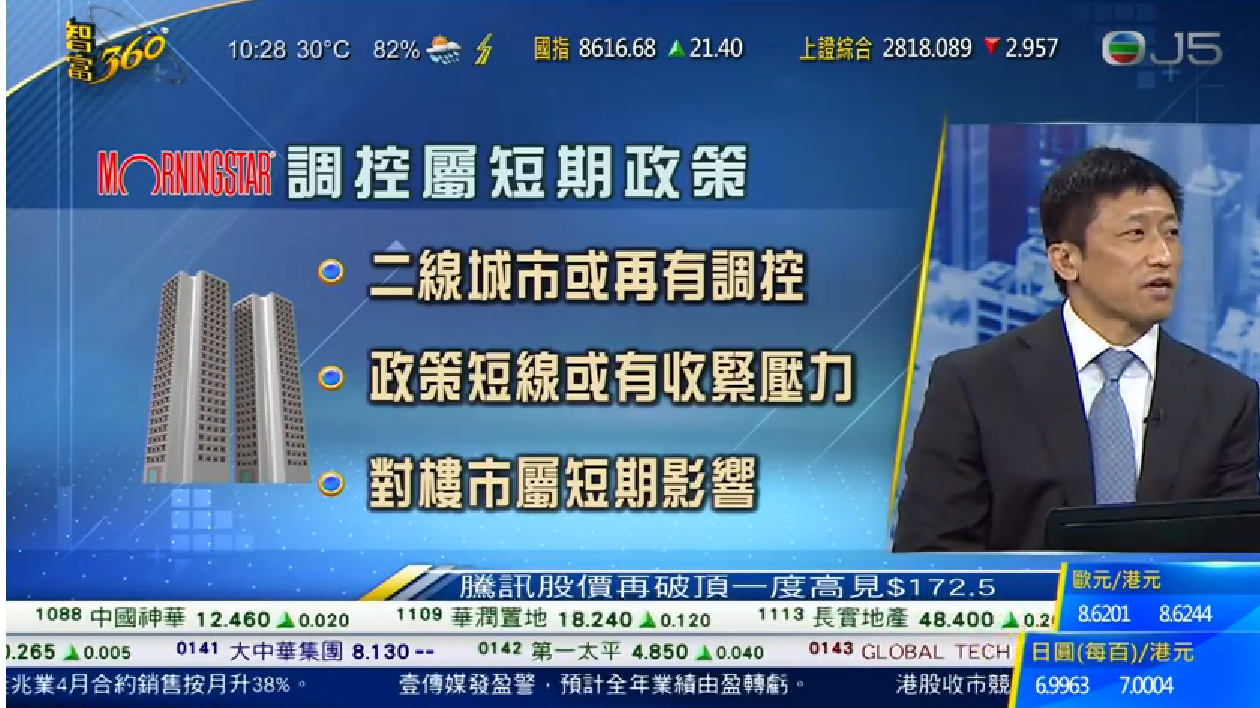Phillip Zhong , senior equity analyst, shares his views on Chinese real estate market at TVB live show on May 30.

Major points of the interview:
Q: Should we expect further tightening measures, especially in the second-tier cities, as property prices surge?
Zhong: The central government's goal is to encourage inventory clearing, hence we have seen loosening measures in 2015, including rate cut, reduction in down payment, and the removal of administrative measures. Any future tightening measures would be dependent on each city's inventory and price situation. But keep in mind, that the central government only wishes to keep housing price stable and not to depress transaction volume. So future measures will be tailored for each city, and will not be anything broad based to the point of affecting the entire housing market.
Q: Should we worry about over supply in 2017? Why?
Zhong: Real estate projects have a long development cycle; so temporary supply demand mismatch is common. Over a longer term horizon, over supply is not an issue. One, developers are now more focused on presale speed and operational efficiency, and less on landbanking, and operational scale. Two, still underlying demand from newly urbanized population (Urbanization rate, China 55%, vs Japan, Korea >90, Taiwan 85%) , and upgrade demand from large number of households living in housing lack modern facilities.
Q: We have seen a number of M&A deals in the Chinese real estate market, e.g., China Overseas Land and Investment is buying Citic's property assets, and Vanke is looking to acquire Shenzhen Metro's property projects. Are we going to see more M&A deals in the sector?
Zhong: M&A deals in the sector will continue. M&A will become the primary growth method for large Chinese developers. The sector is currently undergoing consolidation with many smaller developers and non-specialist conglomerates exiting the market, providing many portfolio acquisition opportunities for large developers. By way of comparison, top 10 developers in China have 15% of the market, while in US, Japan, UK, 30% to 40%.
















